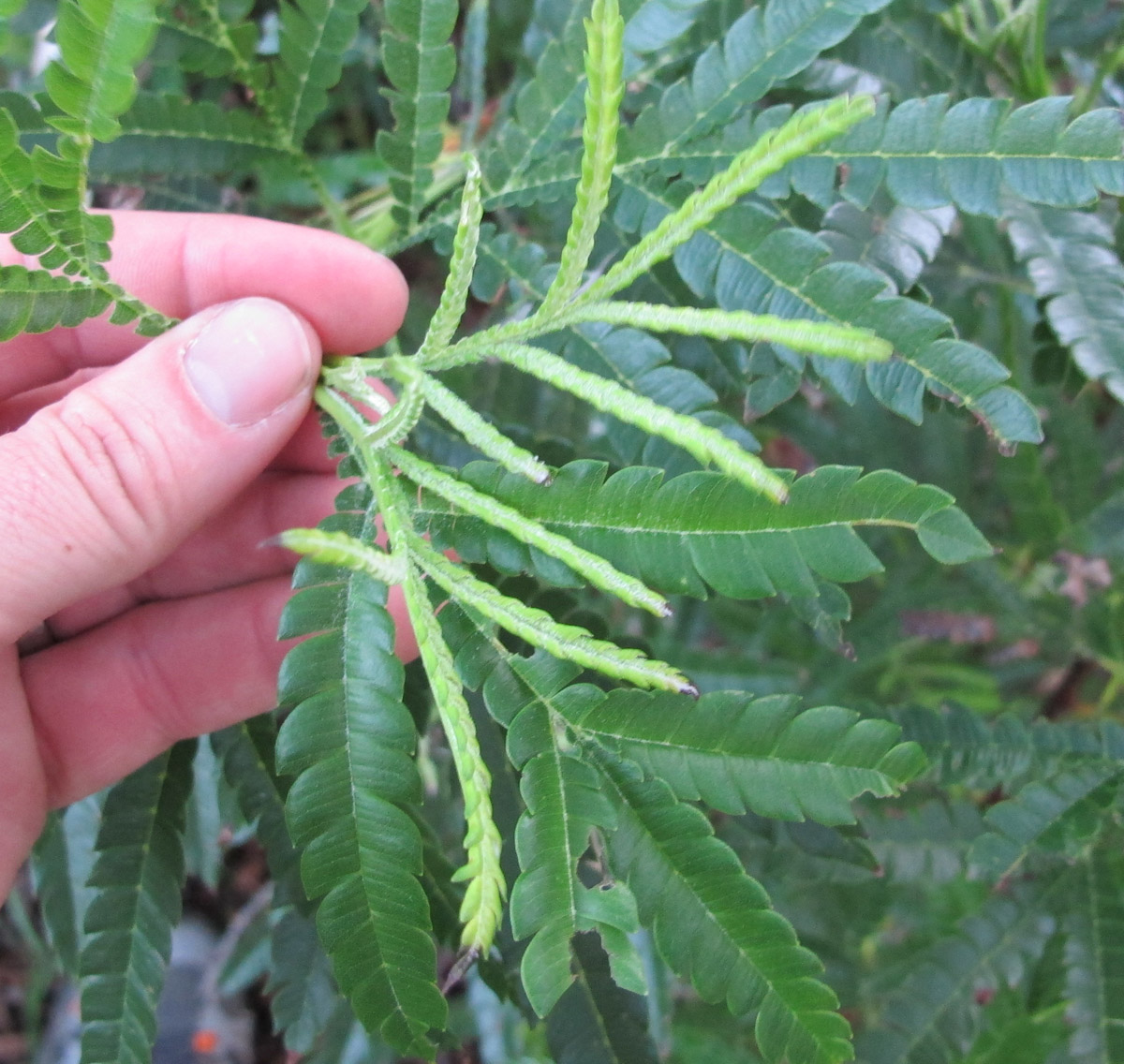Santa Rosa Island Torrey pine (Pinus torreyana ssp. insularis)

The first time Santa Rosa Island landed on my plant exploring radar screen was when I learned about the Torrey pine some time in the early 2000s. I had never even seen this tree until I took a trip to Torrey Pines State Reserve north of San Diego in early 2012. It is the rarest pine in North America with several thousand “mature” trees on both the mainland and island. My bucket list for understanding the ecology of this species is complete now that I have visited the island.
As mentioned in an early post, pigs were first introduced on Santa Rosa in the mid 1800s. By 1888 it is estimated, based on historical records, that there were only 100 Torrey pines on the island. Today, all herbivorous megafauna have been removed (minus 5 sterile horses from the old ranch) and the Torrey pine are thriving–with an estimated 12,300 trees–one-quarter of which are saplings!
Researchers debate the arrival time of the Santa Rosa Torrey pine, estimating anywhere from 6,000 to over 1 million years. Disagreement also exists as to whether these two population represent subspecies or varieties of each other. Some argue the two populations are genetically different enough to be considered a subspecies, others prefer distinction at the variety level. Regardless, it is a beautiful species and well worth seeing in the wild.

The forest is prominent from the boat while approaching the island and is also a quick hike from the back country campground once ashore. The stand is locked in to a north-facing slope approaching the eastern-most point on the island. They survive here in isolation from their mainland relatives because of the persistent cool, moist, foggy air fed to the grove from nearly-consistent prevailing winds from the northwest.


Tree: to 50′ and 3′ DBH; trunk crooked and forked, crown irregular Bark: reddish to grayish-brown with shallow furrows defining flat-topped vertical blocks Needles: 7”-12”, grayish-green to bluish-green, mostly in bundles of 5 Seed Cones: 3.5”-6.5”’, egg-shaped, ripening to reddish-brown Habitat: 20′- 500′, among coastal grasses and shrubs Observations:eastern side of Santa Rosa Island in Channel Island National Park Remarks: one of the rarest pines in the world with fewer than 5,000 mature trees, ~3,000 on mainland and ~2,000 on Santa Rosa Island; 2 populations closely related genetically, may just be varieties.

Ironwood (Lyonothamnus floribundus)
Once on the island and searching for plants, this species became the one I wanted to find the most–especially since it took me a while to find. It associates in and near the Torrey pines, so I’ll include it here.
Relict species always intrigue me and this is a true relict of an ancient southwestern flora. Hollis Marriott has already written about this species, so I’ll share part of it below. More can be found in the link.
From Hollis Marriott‘s blog In the Company of Plants and Rocks
Recognize this tree? According to the fossil record, its close relatives were widespread in western North America during the Miocene, 23 to 6 Ma (million years ago). Fossilized remains have been found from Oregon south through western Nevada and California as far as what is now the Salton Sea (actually, the fossils were 300 km north of the Salton Sea when they were found because their chunk of California had moved that far north during the previous 12 million years). These trees were especially common in western Nevada; they were one of the dominant species at a lake in the Stewart Valley (14 Ma). The most recent fossils are dated at 6-7 Ma and no younger records of have been found. These trees apparently went extinct … on the mainland that is.In 1885, the great botanist Asa Gray described and published a curious new species of tree from Santa Catalina Island off the coast of southern California, calling it Lyonothamnus floribundus. The next year, E.L. Greene reported a closely-related species from Santa Cruz Island — L. asplenifolius. These two trees now are considered to be related subspecies: Lyonothamnus floribundus ssp. floribundus, the Catalina ironwood, and L. floribundus ssp. asplenifolius, the island ironwood or Santa Cruz Island ironwood.When we look at these trees, we can imagine woodlands of 15 million years ago, and marvel at ironwood-dominated landscapes where now there is desert. It is this ability to peer into past worlds, even if only dimly, that makes fields such as plant geography, paleontology and geology so exciting.




More photos of the Lyonothamnus grove!
Thanks!
That’s the Fern Leaf Ironwood, or Island Fern Leaf Ironwood, Lyonothamnus floribundus asplenifolius
The Catalina Ironwood is only native/endemic to Catalina Island, Lyonothamnus floribundus floribundus.
The two different subspecies have different leaf morphology.
Thanks Scott, fixed.
Super cool post, thanks. In a weird twist, Torrey pines are behaving like weeds and invading Maritime Chaparral and Monterey Pine Forest habitat in and around the Monterey region where there are similar marine terraces and sandy substrates like the La Jolla population. Torrey pines are out-competing rare Maritime Chaparral shrubs and needle duff around the CSUMB campus has reduced population density of listed forbs that require open areas of loose sand. The Torrey invasion is particularly noticeable along the Highway 1 corridor near Marina, where pines are aggressively recruiting along the right-of-way. Really interesting recruitment dynamic and it will be fascinating to watch over time… but… it’s not an ex-situ conservation story that helps local rare habitats and who knows what the genetics of the “Marina” or “Carmel Valley” populations are like.